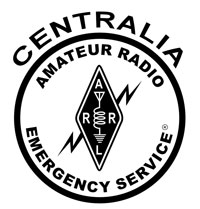Two types of radio messages come into and go out of the Emergency Operations Center during a deployment operation.
Formal message traffic consists of messages sent to Camp Murray (Washington State Emergency Operations Center), Lewis County Emergency Operations Center or another EOC within Washington State. These messages usually contain requests for equipment, situation reports or other priority message information. Very few of these type messages are sent during an actual emergency. When necessary, the Centralia ARES team uses its own version of the IC-213 form (see page two) to pass this type of message traffic. Our ARES team trains using this form quite often so team members will be familiar with its contents.
Informal message traffic is much more common taking up perhaps 98% of all radio traffic during an emergency. This type of traffic consists of windshield surveys, volunteer scheduling, water & road condition reports, sandbag station information, etc. No message form is used for this traffic. Rather, the radio operator at the EOC simply copies down the information on a time/date form so he/she may refer to these “notes” as necessary.
Many amateur radio operators are fearful of “message handling” on a message form. They believe they will not get the information down correctly or simply are not familiar with the message format. Our job, when taking formal message traffic, is to simply get the information down correctly. During an actual disaster, other stations are very forgiving and patient when it comes to sending / receiving formal message traffic. There is no need to fear taking or sending formal message traffic.
Very little “health & welfare” traffic is done by emergency volunteers working the disaster. Other area amateur radio operators may pass this information as time permits but the duty of the EOC radio operators is more specific to the needs of the Emergency Operations Center.
At times, the Centralia Amateur Radio Emergency Services team trains using the ARRL amateur radio message forms. These message forms are used extensively in the United States to pass message traffic. While they certainly are useful, the Centralia ICS-213 form was developed specifically for ease of use by our ARES team and seems to work quite well.
Click here to download and print the ICS-213 form Centralia currently uses.

